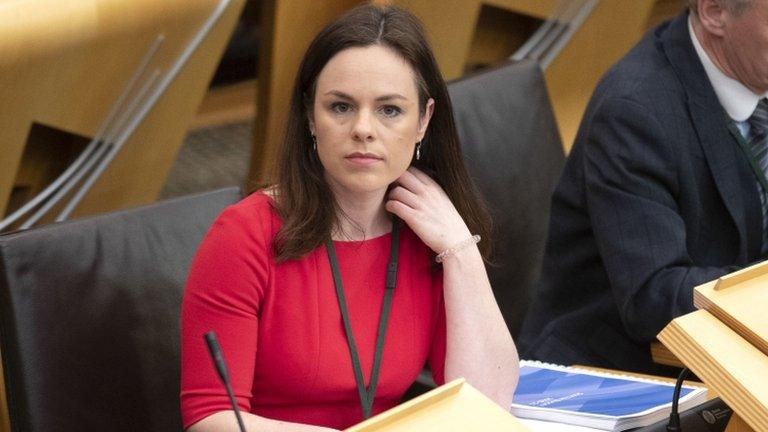'Difficult decisions' for Kate Forbes
- Published
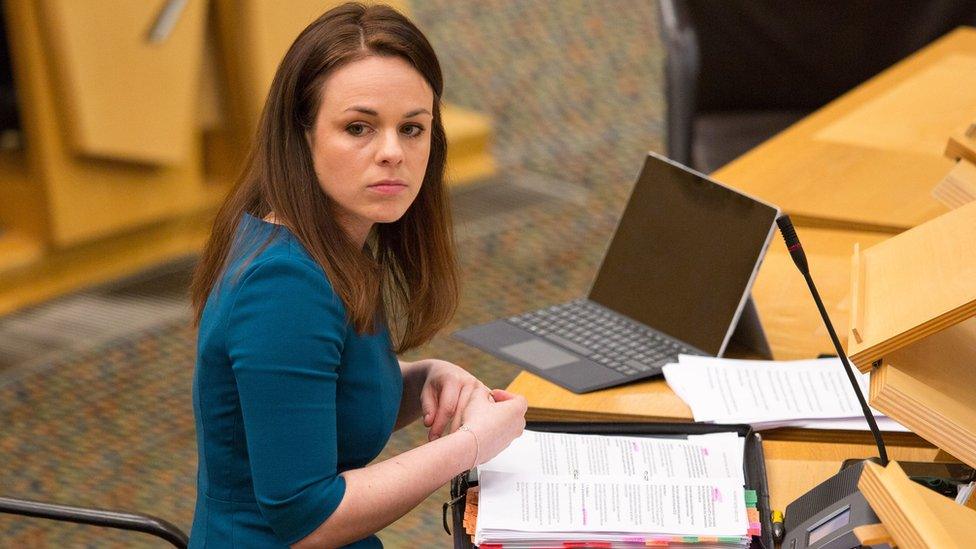
Finance Secretary Kate Forbes will be setting out the Scottish government's spending plans
A growing gulf between Holyrood revenue and spending is reaching crunch point, as the finance secretary today sets out plans up to the next election.
The gap by then is on course to be £3.5bn but it could top £10bn, according to the Scottish government's own projections.
With income tax raising less than expected, and health costing more post-Covid, rising prices, more generous welfare benefits and pressure for higher public sector pay are building up a long list of uncertainties.
It's a spending plan, but not a conventional budget. Kate Forbes' statement at Holyrood will tackle a large, looming deficit, but not as we know that either.
It is, officially, a Resource Spending Review, plus a "targeted review" of capital spending (targeted at ferry-building, perhaps?) plus a Medium-Term Financial Strategy.
But no-one knows much about those at Holyrood, as they're such rare creatures, and previous appearances have not given them much of a predictable shape.
There is a further announcement made online as Kate Forbes sits down on Tuesday afternoon: the Scottish Fiscal Commission sets out its independent forecast for revenue and for growth, for the first time since December.
Back then, inflation was expected to rise as high as 4.4% and growth to reach 2.2%. Instead, there's a war in Ukraine, inflation is heading past 10%, and there's a high risk of recession later this year.
With that background, there is some mystery ahead of Kate Forbes' address to MSPs on Tuesday, as they digest their lunch.
Waiting lists, staff shortages
If they're paying attention, the finance secretary may have some things to say which will shape much of their work over the next few years - about how to prioritise spending when pledges and expectations have run some way ahead of resources available.
Ms Forbes is conceding that Holyrood's finances are in a "difficult position", and "difficult decisions" lie ahead, but two pre-briefings suggest that they will be surrounded by much reassurance about plans remaining on track for hard-pressed households and for public services.
"Difficult decisions" is a finance secretary's warning that some public services will find this an uncomfortable experience.
We know health spending has been rising to take an ever larger share of the Holyrood budget, and post-Covid - amid long waiting lists and staff shortages - that trend seems only likely to accelerate.
We also know that welfare benefits have been partly devolved. The Scottish government is keen to demonstrate how much more generous things can be in Scotland. Hence, the creation and now the doubling of the £10 weekly Scottish Child Payment, and extension of its reach to older children.
The problem is that being generous, where resources are constrained, comes at a cost to lower priorities.
Borrow or tax
'So don't constrain them', goes the response - 'if only Holyrood could borrow more'.
It could, given the powers or if Scotland were independent, but let's not pretend borrowing could be an infinite source of income for the Scottish government, that it could be achieved without risk and cost, or there would be no need to make choices. More significant: for now, it's not allowed to.
'OK, so raise taxes,' goes the cry. 'At least Holyrood has some powers to do that'.

The Covid-19 pandemic has had a major impact on Scotland's economy
That's true too. But having raised taxes on higher earners, and raised the tax burden by around £500m over the one that would apply under Westminster income tax bandings and rates, the end result looks like the Scottish government being £190m worse off this year than it would be without any such powers.
That's not necessarily because higher income tax rates have reduced revenue from them, though there may be a bit of that going on as high earners find ways to pay tax through Westminster instead. It has more to do - from what we know for now, at least - with an over-estimate of the size of Scotland's income tax base.
That forecast error is not Scottish ministers' fault, but they're the ones who have to handle the consequences.
Holyrood generosity
The Institute of Fiscal Studies has looked down the road to the end of this parliamentary term, and sees a £3.5bn gap opening up between spending and income. That reflects the factors of generous spending pledges and free stuff being given away, and from tax revenue under-performing.
That got quite a lot of media attention at the end of last week. It won't have surprised Kate Forbes or her colleagues in St Andrew's House, because they published the same figure last December in the last Medium-Term Financial Strategy, page 31.
"The drivers of public spending illustrate the variable and growing demands on public funding over the spending review period. If we compare our central funding forecast with our mid spending projection, this suggests a growing gap which reaches approximately £3.5 billion in 2026-27."
It went on: "At the extremes, the low funding compared with the high spending trajectory opens an estimated gap of approximately £10.3 billion in 2026-27, while a high funding combined with a low spending trajectory gives a £3.7 billion surplus". You read that correctly. If both spending and revenue go in unhelpful directions, the gap is ten point three billion pounds.
If you don't usually budget in billions, the IFS helpfully points out that £3.5bn is more than Holyrood's entire spend on police, fire, courts and prison this year. Or more than all the spend on higher education and student support.
Hoping for Sunak
Of that three and a half billion, the IFS calculates that around £1bn is because welfare benefits are more generous than the rest of the UK, but the funds that flow from Westminster don't take account of that. So that money has to come from elsewhere in Scotland.
It points out that Scotland shares NHS pressures with the rest of the UK. Waiting lists in Scotland at the end of 2021 were 50% higher than 2019, and waiting-time targets were being widely missed.
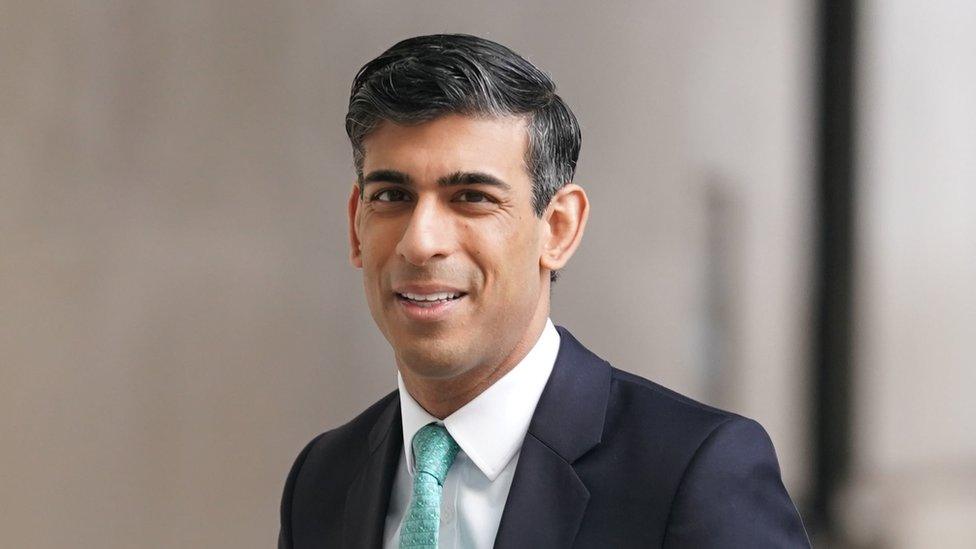
It is hoped that chancellor Rishi Sunak can find more funds to help the Scottish government
Some of that pressure may reduce as the path of the pandemic becomes clearer, if the impact of Covid isn't felt too badly in acute services, and if long Covid doesn't take too much of a chunk of health spending.
So the £3.5bn figure may turn out to be too high on Covid health costs. But on the other hand, it may under-estimate the cost of long-term demographic change in the demand for social care, allied to a promise to set up a National Care Service, with significantly better pay for care workers, both public and private.
And inflation puts up the price of public services. To illustrate the problem it presents, the IFS has taken the growth rate in the 1.4% day-to-day or resource budget, and points out that to maintain it in the face of inflation during the current financial year, 2022-23, would require a further £550m.
'Inflationary pressures'
That would help narrow the gulf between this year's public sector pay plans and price inflation.
The Treasury in London may yet find more funds to help Whitehall departments and devolved administrations deal with that extra pressure.
And that is one of the options the IFS thinks may be deployed by Kate Forbes - hoping that Rishi Sunak comes up with something.
This week's event is not a budget, so it doesn't have to be balanced. Nor did Mr Sunak's £15bn giveaway last week, because he is allowed to borrow most of that.
However, if the chancellor decides to squeeze departmental spending without matching inflationary pressures, those "difficult decisions" will mean a choice at Holyrood between a) higher taxes or b) public spending cuts or c) a bit of both.
- Published29 May 2022
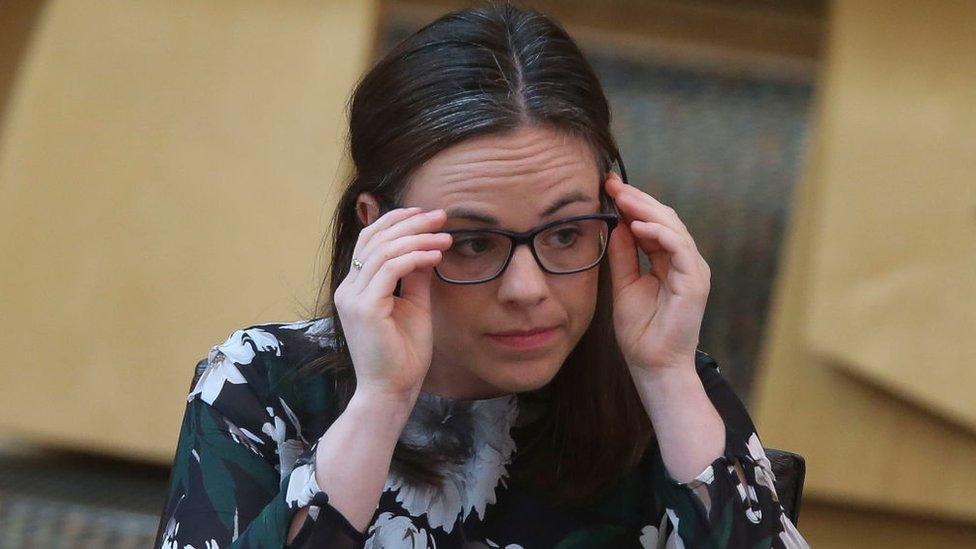
- Published19 April 2022
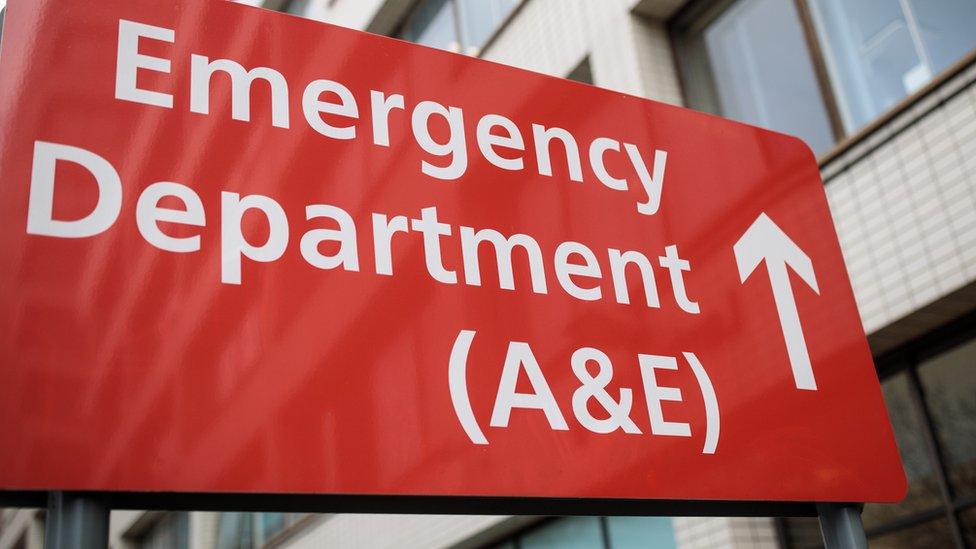
- Published25 January 2022
- Published7 December 2021
